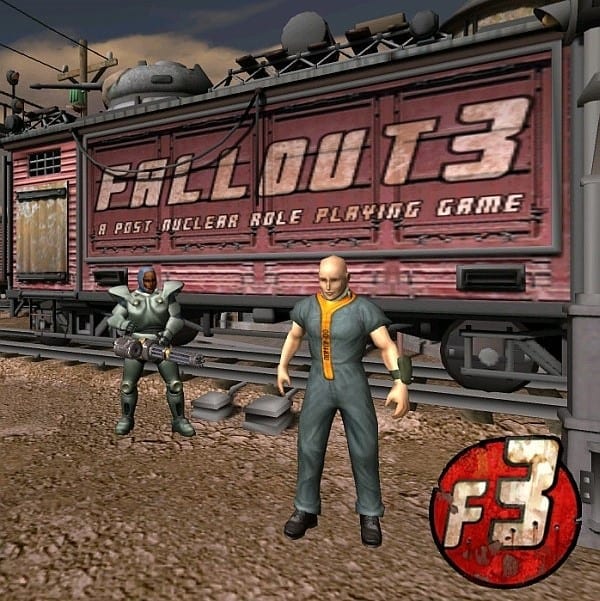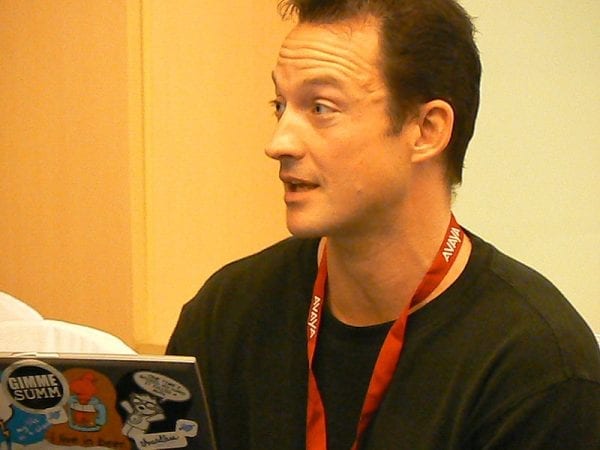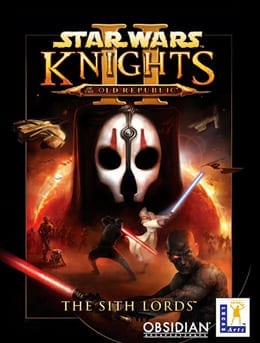An Interview with Damien Foletto
by Joseph Avery-North and the Winterwind Staff
Winterwind had the opportunity to catch up with Damien Foletto over the holiday season for an exclusive two-part interview. Part One covers Damien’s start in the industry, he talks about Fallout, Baldur’s Gate and Icewind Dale, and the interview covers the period up until the final published crpg release from IPLY/BIS, Lionheart.
Winterwind: A lot of game developers seem to start in the industry in their early 20’s, straight out of college. You took a different path, entering the industry in your early 30’s. What lead to your getting into gaming as a career choice and why the “late” start?
Damien Foletto: Naivety I think sums up my late start pretty well. I always thought I had to be a programmer to get into the industry, or at least proficient in a 3D tool of some kind, like MAX or Lightwave. And since programming bored me to tears and 3D tools were prohibitively expensive, I never really gave a career in game development much thought.
However, my passion through school, and as a hobby outside of my regular work, was writing, particularly creative writing. My goal in my twenties was to complete a novel and get it published. I eventually completed the novel, but was told by several publishers that, unfortunately, the genre I wrote in was over saturated at the time (the novel was a vampire tale in which the protagonist could only feed on other vampires). When I started the book, the market was not over saturated, but by the time I finished it, the market was. Oh well.
Now, all this time while I was writing my book and working my boring corporate job, I was, of course, playing computer games. The games I was playing when I finished my book were Quake II (multiplayer, mostly – I was even in a clan), Warlords II or III (can’t remember, exactly), Star Trek: A Final Unity (shut-up), and no CRPG’s since Ultima VI – nothing in the CRPG genre appealed to me at the time. However, soon after my wife and I moved into our new house in lovely Anaheim, a friend of mine, Chris Jones who worked at Interplay at the time, loaned me one of his copies of Fallout that just got released (Chris was the lead programmer). I was hooked from the moment Ron Pearlman’s gravely voice began the narrative, “War… War never changes…”
Fallout conveyed to me that it was possible to not only tell a compelling story within a computer game, but also have the player direct where the story went. This was fascinating and exciting to me. I love telling stories via the written word, but I also love the interactivity of computer games. So, I concluded, what better career could I find for myself than to become a game designer? And the best part of it was, I did not have to be a programmer to become a designer nor did I have to be an expert in a 3D program to design CRPG’s – a discovery I made when I asked Chris about designers at Interplay.
Great! But how do I get into the industry? “You could become a tester and learn a lot about the industry as you work your way up,” Chris Jones suggested. Unfortunately, I could not afford to take the humongous salary cut to become a tester at the time Fallout was released. In fact, it would not be until after Fallout 2 was released and Planescape: Torment was 3 months from release before I could afford to take the salary cut. My wonderful wife, Dianne, held a great financial position at her job in which we could afford the cut. So, when Dianne gave me the go-ahead, I applied at Interplay to be a tester, got the job, quit my boring corporate job, and began my path towards becoming a game designer, specifically for Black Isle Studios.
WW: Do you have any major influences in the gaming world? What games did you play before you started making them?
DF: My biggest initial influence to get into the gaming industry was Fallout, but there were plenty of other games that eventually would become inspiring to me. Some of my favourites are Fallout (duh), Planescape; Torment, Half-life, Ultima VI, Wing Commander II, Harpoon, Civilization II, Warlords, Castle Wolfenstein, Deus Ex, Diablo, System Shock I & II, Crusader: No Regret and No Remorse, and most recently (past couple of years) City of Heroes, Grand Theft Auto III, Star Wars: Knights of the Old Republic, Half-life 2, World of Warcraft, Star Trek: Elite Force (okay, more than a couple of years, then), the combat model in Temple of Elemental Evil (perhaps the best turn based combat model for D&D ever) and the overall narrative in Vampire: Bloodlines.
Damien Joins Interplay/Black Isle Studios…

WW: Interplay was a well established, well known company. What made you pick Interplay when you were knocking on the gaming industry door? Did you let out any loud “whoops” when you received the “you’re hired call”?
DF: I chose Interplay because I wanted to work for Black Isle Studios specifically. When I found out I was hired at Interplay to be a tester, I let out a minor “whoop.” The major “whoop” came when I was hired at Black Isle.
WW: The first title you worked on was Invictus: In the Shadows of Olympus. You started as a tester in the QA Dept. What do you remember most about the first title you worked on?
DF: I remember how much the game sucked and how much I wanted to test something else. Plus, I wondered how my testing lead on Invictus could work on his own web page projects and still get paid to be my test lead while never even looking at Invictus in the first place. I wonder what warehouse he’s a sweeper in, now…?
A Tester on Baldur’s Gate II…
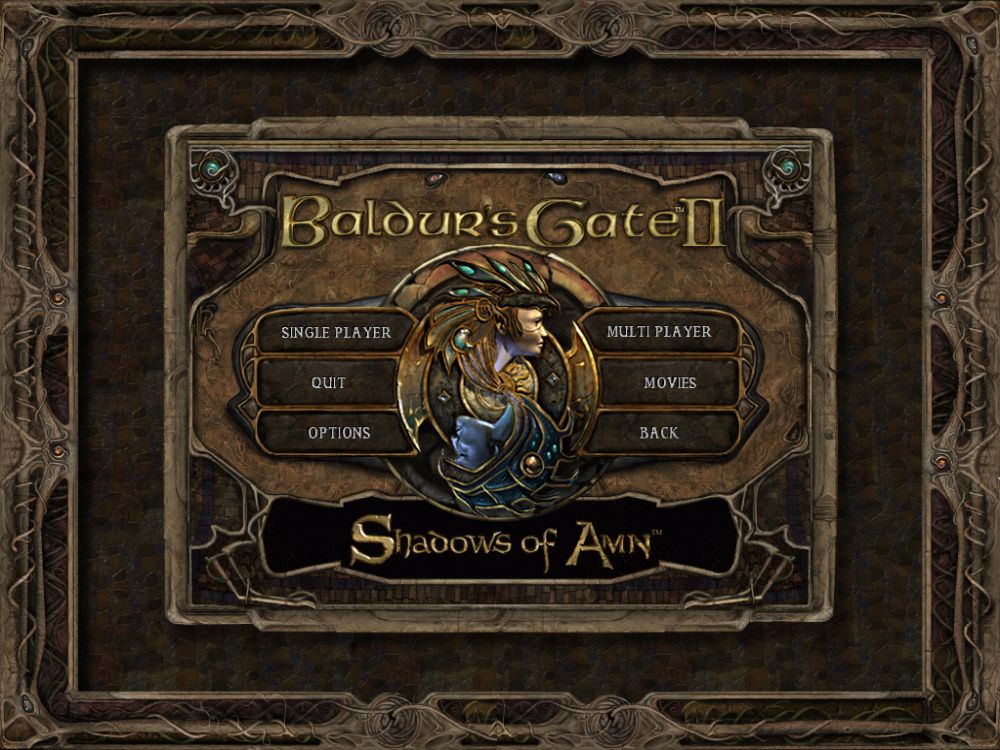
WW: The next game you worked on was Baldur’s Gate II: Shadows of Amn, the sequel to the acclaimed Baldur’s Gate: Tales of the Sword Coast crpg. What was the experience like being involved on the sequel and its expansion Throne of Bhaal?
DF: That project was a great learning experience for me and allowed me to stand out enough to get noticed by the powers-that-be in Black Isle. The testing team I was on was great (unlike my Invictus experience) and we all did great work to make BGII such a clean (comparative to most CRPG’s released), fun game. Since I was the critical path tester, I got to learn first hand what was necessary to keep the core narrative flowing while allowing the player freedom to do side quests throughout the game. Granted, the open-endedness of BGII was really restricted to chapters 2 and 5, but it still managed to give a decent illusion of open-endedness compared to most games in the genre. Fallout was still the master of open-ended game play, though.
Another fun experience during my testing of BGII was going to Edmonton, Canada, to work on BGII at Bioware. A lot of down time was spent playing Soul Calibur on Bioware’s big screen TV. I never got very good at it, resorting my virtual fighting skills to much button mashing, but several others on my team got very good at SC – almost as good as the Bioware guys! When the Bioware guys would cut out at 6 pm, we would stay behind to about 8 or 9 and continue testing BGII. But that was pretty typical of the tester’s life – first in the door, last one out.
WW: You spent some time at Bioware during the development of BG2. What role did the Black Isle team have when they were at Bioware and what do you recall most about the visit to Canada?
DF: Our primary role as testers in Canada was to test. If we were really ambitious, we would give design input on what we thought worked well in the game and what we thought didn’t. Half the time they took our advice, which is pretty typical because not everyone sees things the same way. Thankfully, Bioware took our advice on the end game scenario and how it played out. The original end game scenario would have caused a lot of fists to go through a lot of monitors.
My best memories of my stay at Edmonton and working at Bioware’s facilities were how nice the guys at Bioware were and how good the beer was at the local pubs. Much better than the watered down junk we call brew in the States, eh!
A Tester on (ugh) Fallout Tactics…
WW: The last game you worked on as a QA Tester was Fallout Tactics. Had you played the Fallout games before working at IPLY or was your first exposure research while working on FOT?
DF: I had played through Fallout about ten times by the time I started working on FOT. I was very familiar with the Fallout universe, which was good and bad, depending on your perspective while working on FOT. It was good because I knew what fit in the Fallout world and what didn’t. It was bad because I knew what fit in the Fallout world and what didn’t.
WW: FOT was not well received by the FO fanbase. What was your impression of the game during it’s development?
DF: I knew FOT was not a PCRPG from the get-go, so I approached it as purely a strategy game when we started working on it. I enjoyed FOT tactics for what it was up until about mission 11 – that’s when I think the whole robot scenario started and did not let up until the end. I grew to hate robots in just about any game after that. However, before mission 11, I actually thought, overall, FOT was a decent, but not a great strategy game. It was not Fallout, I’ll say that up front, and I’ll say it because a lot of the retro ‘50’s feel was left out of the game’s atmosphere. Hum-vees, endless robots, etc, solidified the miss on the atmosphere, in my opinion. But my biggest disappointment was that FOT was being done instead of Fallout 3, and that, also in my opinion, doomed FOT from the get-go.
A Designer on Icewind Dale II…
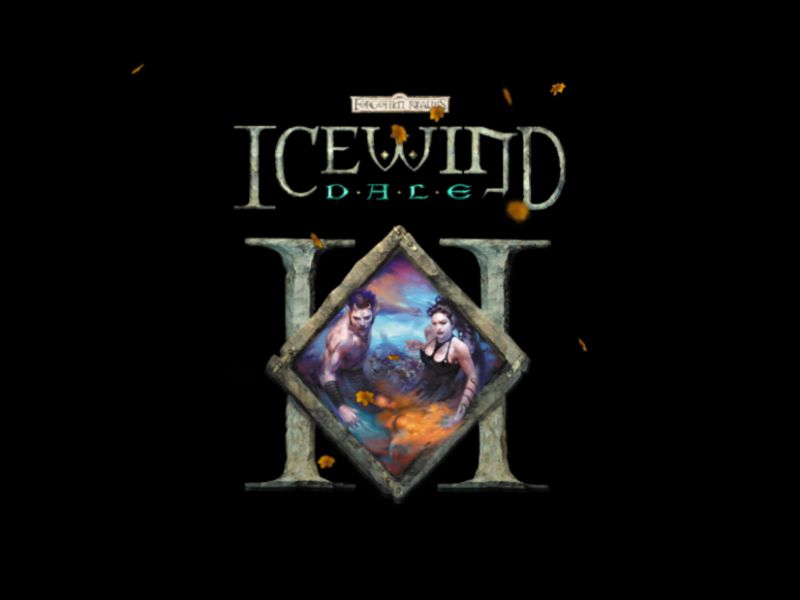
WW: On Icewind Dale II you got to cut your teeth as a designer. What was it like working on a game for the first time as a designer? Did you approach it cautiously or did you were you determined to re-invent the wheel?
DF: It was a real kick when I started designing for IWD2. I remember plotting out my first area and realizing, “I made it.” I had a blast coming up with the area’s look, quests, dialogues, characters, etc. And, for this first area, I approached it very cautiously, mostly because I was learning the tools at the same time I was supposed to have the area complete in about four weeks (we were on a rush schedule throughout the whole project).
However, when I got assigned to work with a fellow designer (John Deiley) on IWD2’s end game area, Severed Hand, I let loose my chains (as much as I could) and tried to be as freewheeling as possible. Originally, I wanted the player to have the option of not only siding with the evil god, Iyachtu Xvim, but also taking over Severed Hand and using its power to overtake the Ten Towns for themselves. Unfortunately, this was a bit too ambitious for our very tight schedule, so you got what shipped instead – a very slight nod to evil options.
Some people thought Severed Hand was too spread out and not “actiony” enough, others really liked all the different quests and options they had while exploring Severed Hand. I can’t please everyone, but I’m really proud how Severed Hand turned out given the very restricted amount of time we had to flesh it out.
WW: What advice, if any, were you given by colleagues/friends?
DF: Take criticism with a grain of salt, don’t take it personally, let loose with the creative juices, and wipe up after yourself when you’re done.
WW: What areas of IWD2 did you design?
DF: Fields of Slaughter, Horde Fortress, and Severed Hand.
WW: What area were you most proud of what you accomplished and what would you have done differently?
DF: See two questions ago for the answer; Severed Hand.
The End of IPLY/BIS… Damien Moves On…
WW: The last crpg released by BIS/IPLY was Lionheart, developed by Reflexive. You worked on the title in an uncredited capacity. What was your involvement?
DF: My involvement was really small. On occasion I would work with Chris Avellone editing the dialogue for the game.
WW: What were your thoughts on the game’s potential during development and the reception it received?
DF: I thought the original concept of the game was a good one. It read great on paper – an open-ended CRPG using the SPECIAL system and taking place in an alternate earth history where magic and fantasy had become reality. Things went downhill from there once real-time combat was introduced, map notes were never put in, game flow became erratic and all but disappeared after Barcelona, etc. The potential for a good game was there, but it really fell short. It’s too bad, because the core engine and tools were excellent.
WW: What was your working schedule like as both a tester and designer? How many hours did you work in a typical week? What about the weeks just before a big title had to be shipped to the publisher?
DF: As a tester I spent many long hours grinding away testing game after game. An average workweek during crunch time was 60 to 80 hours. We did get reprieves from the long hours between crunches, but they never lasted more than a couple of months. People also have the misconception that testing is nothing more than playing a game all day, “Wow, where can I get a job like that, HAR-HAR-HAR!” What people do not realize is that game testing can be monotonous, tedious, and meticulous work. Sure, there are a lot of fun moments, but it is still very much work. And good testers can make a mediocre game better provided the devs actually pay attention to the testers’ input.
When I became a designer, not much changed hour wise. This was because IWD2 needed to be made in less than five months, and we just started the project. The reason for the crazy schedule was because Interplay was in financial trouble (was there ever a time IPLY wasn’t?) and IWD2 was the only thing that could be shipped quick enough to save IPLY. So, because of this war-trench development schedule, I was working 60+ hour weeks pretty much for the whole project, which turned out to be eight months of actual dev time (it took another 3 months to actually ship the project because of contracts and such).
After the IWD2 craziness, I did not work crunch again while on BG3 or Fallout 3. Granted, neither title got the chance to hit crunch mode, but both titles were ahead of schedule, so crunch would have been minimal. Plus, the team for both BG3 and F3 were top notch and got their stuff done and done well. It’s really a shame that both projects were axed due to circumstance beyond the teams’ control.
As for designing at EA, let’s just say there is no such thing as not being in crunch time. It was a learning experience there, but I’m ecstatic I moved on and found a home at Raven Software (warm-fuzz).
WW: With so many people involved in the making of a game, surely there had to be some clashes between opinions. Is there anything you would have liked to include in a game, but weren’t allowed to?
DF: The whole end game scenario I described earlier for IWD2 is one thing, but it was hardly a clash of ideas. Josh Sawyer, the lead designer, liked the idea, but knew there just wasn’t enough time to do it. The funny thing is, we never had any clashes per say, Josh and I. We would have discussions with somewhat differing opinions here and there, but they were never clashes. Josh was (is) a very smart guy, so it was easy to discuss things with him without him feeling threatened to the point where a clash would ensue. The same thing could be said about Chris Avellone as well. Both were great to work with and I know they will be very successful in leading future projects.
But there were minor clashes here and there with a designer (who shall remain nameless) who could not, and would not, ever take constructive criticism, ever. Once anything was said about a design of his that went against his thinking, he immediately brushed it off, got flippant, said the comments were “ghey,” etc. Not conducive to a productive environment. I hope he learned his lesson and has matured to the point where he can take as well as give in a civil manner. The lesson that should be taken from this example; always be willing to take constructive criticism, don’t take it personally, and always realize that game development is a collaborative effort and not a one man (or woman) endeavour.
WW: Are there any specific people, either alive or dead, that you would have dreamed of working with?
DF: Wow, that’s a loaded question. To be truthful, I do not hold anyone on a pedestal in the industry. This isn’t out of personal arrogance, but more about knowing that no game is ever made by just one person. A lead designer or project lead/director may have an overall vision for a game, but it is the collaborative effort of everyone involved that makes a game truly great.
All I can say about this question is that I’m living my dream right now. I’m currently working with the people I want to work with, on a project I enjoy and believe in. I’m very lucky and I know it.
WW: How do you see the future of video games? More specifically, do you think PC titles have a viable future or will they be replaced by the next generation of consoles?
DF: I truly believe PC games are here to stay. I do think there will be more and more cross platform development, with fewer and fewer PC-only titles, though. But to say PC gaming is dead is just plain ignorant and shows a lack of understanding about the gaming community as a whole.
WW: Will the North American gaming industry eventually be outsourced overseas for cheaper development costs?
DF: I certainly hope not, but you never know. I think huge publishers are frothing at the gum for such opportunities, the publishers who care only about the bottom line profit margin. But I also think there are publishers out there who are equally interested in quality and look at a developer for their talent and potential, rather than just the bottom line cost – the whole package, as it were. It’s a tough one to predict, but I do not think this will come to pass overnight, so start your petitions now. ;p
WW: CRPGs have a reputation for being buggy. It’s been said that publishers don’t know how to handle quality assurance for something more complex than racing games or FPS. Since you started in the QA Dept. at Interplay, what are your thoughts on this statement?
DF: CRPG’s are the toughest game to debug, bar none. If you make a game with a myriad of quest options and world interactivity, you are just setting yourself up for an avalanche of potential problems. If a designer does his job well, he has made quests that have several paths towards completion. While this sounds great, it opens up a whole can of worms for the programmers and scriptors to overcome. If the designer does their own scripting – which most designers do nowadays – then that is just more complexity the designer must contend with.
Often times, the designer must seek out the programmer to get a particularly complicated script to function. On the surface, this complicated script might work in its initial phase, but once a slew of testers jumps on said quest, something will break because a tester tried something neither designer nor the programmer initially thought of. The script will get fixed, but it might not be entirely fixed.
This is because compared to the general populace who purchases a game, the testing pool is infinitely small. There is bound to be a large group of people who will try things in a CRPG that the designer, programmer, producer, tester, etc. never thought of doing. Of course, the people who find this bug will be the most vocal – people rarely take the time to post praise, but always seem to have more than enough time to post complaints. So, this gives the perception of a “buggy game,” even though the game probably shipped relatively bug free. This is not to say that CRPG’s are not buggy, but what I am saying is that CRPG’s actually have a legitimate excuse for being buggy upon initial release. Some worse than others, that’s for sure.
The team at Winterwind would like to thank Damien Foletto for taking the time to do this interview. We also thank Raven Software for their co-operation.
Stay tuned for Part Two…
Note – This interview was originally published on the old Winterwind Productions site in January, 2005, prior to our switch to WordPress in 2020.
- The Winterwind Shorts - May 7, 2021
- Hot Karl is Coming! - April 28, 2021
- The Art of Mixing - February 25, 2021

